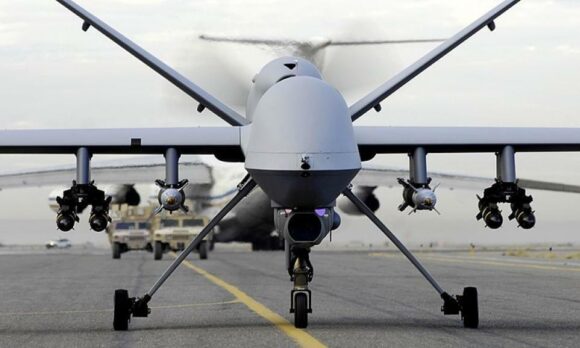Information technology is driving rapid increases in the autonomous capabilities of unmanned systems, from self-driving cars to factory robots, and increasingly autonomous unmanned systems will play a significant role in future conflicts as well. The prospect of increased autonomy in weapons systems raises challenging legal, moral, ethical, policy and strategic stability issues. Nation-states and activists in the United States and abroad are already debating how advances in autonomy will influence warfare – and what, if anything, should be done. Activists have launched a “Campaign to Stop Killer Robots,” comprised of over 60 non-governmental organizations. For the past several years, state parties to the United Nations’ Convention on Certain Conventional Weapons have held informal discussions on autonomous weapons, and states agreed in 2016 to form a Group of Governmental Experts to further explore the issue.
Governments and militaries are only beginning to grapple with how to address the challenges and opportunities associated with increased autonomy. Technology is moving fast in this area. Few states have guidelines on how autonomy should be included in future weapons systems, with the United States a notable exception.
CNAS’ Ethical Autonomy project examines the legal, moral, ethical, policy and strategic stability dimensions of increased autonomy in future weapon systems. The goal of this project is to help states, activists, academics and militaries grapple with the challenging issues of autonomy in future weapons. This dialogue is necessary to ensure an appropriate balance between ethical and strategic stability considerations, technological opportunities and future warfighting needs.
CNAS Senior Fellow Paul Scharre asked experts to examine the future of autonomous weapon systems. View their responses.
Resources
Bibliography on autonomous weapon systems:
- Visit the Ethical Autonomy bibliography webpage
- Download the PDF Version
- Download the Microsoft Word version
Join the discussion on #autonomousweapons on Twitter.
Online resources on autonomous weapons:
- Article 36 – Autonomous Weapons
- Campaign to Stop Killer Robots
- Human Rights Watch – “Killer Robots”
- International Committee of the Red Cross – New Technologies and International Humanitarian Law
- International Committee for Robot Arms Control
- Just Security – Editors’ Picks: Autonomous Weapons Systems
- Reaching Critical Will – Fully Autonomous Weapons
- Transcripts and materials from the May 2014 United Nations Convention on Certain Conventional Weapons meeting on lethal autonomous weapons
- UN Institute for Disarmament Research - Autonomous Weapons
- U.S. Department of Defense (DoD) policy on autonomy in weapons: DoD Directive 3000.09
Information technology is driving rapid increases in the autonomous capabilities of unmanned systems, from self-driving cars to factory robots, and increasingly autonomous unmanned systems will play a significant role in future conflicts as well. The prospect of increased autonomy in weapons systems raises challenging legal, moral, ethical, policy and strategic stability issues. Nation-states and activists in the United States and abroad are already debating how advances in autonomy will influence warfare – and what, if anything, should be done. Activists have launched a “Campaign to Stop Killer Robots,” comprised of over 60 non-governmental organizations. For the past several years, state parties to the United Nations’ Convention on Certain Conventional Weapons have held informal discussions on autonomous weapons, and states agreed in 2016 to form a Group of Governmental Experts to further explore the issue.
Governments and militaries are only beginning to grapple with how to address the challenges and opportunities associated with increased autonomy. Technology is moving fast in this area. Few states have guidelines on how autonomy should be included in future weapons systems, with the United States a notable exception.
CNAS’ Ethical Autonomy project examines the legal, moral, ethical, policy and strategic stability dimensions of increased autonomy in future weapon systems. The goal of this project is to help states, activists, academics and militaries grapple with the challenging issues of autonomy in future weapons. This dialogue is necessary to ensure an appropriate balance between ethical and strategic stability considerations, technological opportunities and future warfighting needs.
CNAS Senior Fellow Paul Scharre asked experts to examine the future of autonomous weapon systems. View their responses.
Highlights
-
Autonomous Weapons and Operational Risk
20YY Future of Warfare Initiative Director Paul Scharre examines the risks in future autonomous weapons that would choose their own targets and the potential for catastrophic ...
By Paul Scharre
-
Why We Must Not Build Automated Weapons of War
Over 100 CEOs of artificial intelligence and robotics firms recently signed an open letter warning that their work could be repurposed to build lethal autonomous weapons — “ki...
By Paul Scharre
-
An Introduction to Autonomy in Weapon Systems
20YY Warfare Initiative Director Paul Scharre and Adjunct Senior Fellow Michael Horowitz discuss future military systems incorporating greater autonomy....
By Michael Horowitz & Paul Scharre










